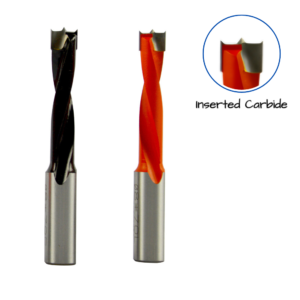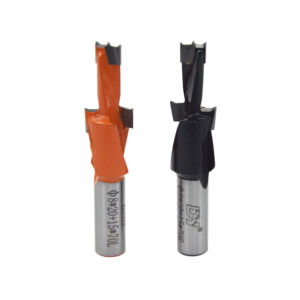Computer numerical control (CNC) technology has revolutionized the drilling process, increasing automation, accuracy, and versatility. CNC drill bits have become an indispensable tool in the woodworking industry for a variety of drilling needs.
The types of wood bits are as varied and extensive as wood itself, and each type of wood drill bit has its own unique features, providing unlimited capabilities for shaping and crafting this naturally textured material.
In this article, we aim to explore the various applications of different models of wood bits and reveal the secrets hidden in each drill bit to help you choose the best tool to complete your woodworking project.
Given the diversity of wood bits, the application of each drill bit is influenced by its unique design and structure. Here is an introduction to some different types of wood bits and their specific uses.
● V-point Drill Bits:
V-point drill bits, also known as through-hole bits, are designed for drilling holes in wood materials. These drill bits have a sharp V-shaped tip that provides precise and clean holes.
The carbide tip increases the durability and life of the bit, allowing for longer use without frequent replacement. V-point drill bits are often used for tasks such as creating pilot holes or through holes. Solid Carbide V-Point Drill Bits are a type of V-Point drill bit that solid carbide in the tip and groove of the drill bit. These bits provide better performance and longer tool life.


● Brad Point Drill Bits:
Designed for woodworking applications, brad point drill bits feature a sharp center point and sharp spikes that help drill clean, precise holes in wood. The sharp tip ensures accurate positioning, while the spikes cut clean edges and reduce chipping and tearing. Brad point bits are ideal for drilling holes for dowels, hinges, and other woodworking joinery, making them a must-have tool for carpenters, furniture makers, and hobbyists.
During the drilling process, even the slightest slip of the bit can have an impact, especially in tasks that require high precision. To combat this, a three-prong drill bit can be used. This tool has a sharp protrusion at the tip that prevents the edge from slipping during the work.


● Foster Drill Bits:
Foster drill bits are known for their ability to drill flat-bottomed, clean-sided holes with excellent precision and control. Unlike traditional twist drill bits, Foster bits cut wood with a scraping action rather than a shearing action, resulting in smoother, more accurate holes.
In the construction of many wardrobes and cabinets today, medium-density wood materials are used: MDF, wood and particleboard, among others. It is not appropriate to use only screws to create hinged doors for cabinets made from these materials, as the screws may strip out. To solve this problem, a special type of hinge was made, which is used in many cabinets. A hinge drill is one of the types of drill bits used to install these hinges. Sometimes this bit is also called a Foster bit, which comes from the name of the first company to produce this type of hinge.


● Countersink Drill Bits:
Countersink drill bits are designed to create a tapered recess in a material, allowing the screw head to sit flush with or below the surface. These bits usually have a combination of a drill and countersink slot, enabling the user to drill a pilot hole and a countersink in one operation.
Countersink drill bits are essential for placing screw or nail heads into wooden surfaces without damaging the wood fibers, ensuring that the screw head is flush with the wood and does not protrude. Countersink bits are essential for professional finishing in woodworking, cabinetry, furniture making, and other applications where beauty and precision are critical.



We hope this information helps you make an informed choice in selecting the best wood drill bit for your project.